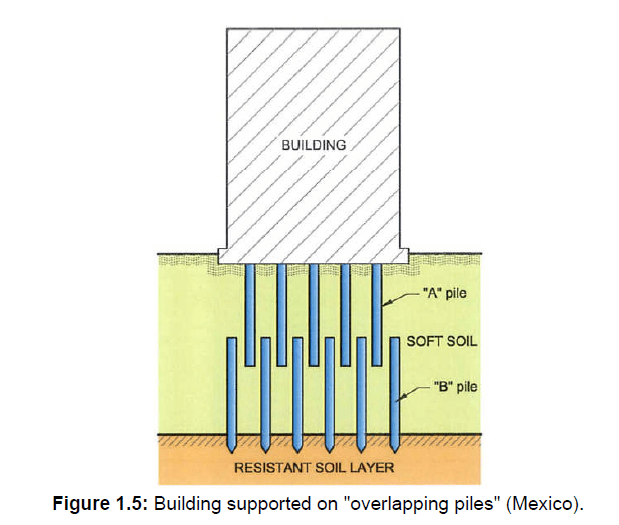They are extremely similar to Piles in terms of What they are but in terms of behavior they are quite different.
@MotorCity The Piles, Both A and B, are within the Zone of Influence of the Structure, lets say 2B for a width of 10m, so being present within 20m (within the layers), they will naturally resist oncoming loads (of any kind vertical, lateral, etc. it's nature. Also, the denser medium always contributes more (concentration) than the less denser medium, ie. Concrete>Sand. when Concrete fails, more load goes to the sand, etc.
@MTNClimber The story is centered around people creating Rigid Inclusions without realizing they created Rigid Inclusions. In terms of element, they are exactly like piles but much smaller and they are NOT connected to the Base Plate of the structure. They have a layer called the "Load Transfer Platform" between them and the structure. It serves 2 purpose, 1) transfer the load between the soil and the RI's (unlike Piles which traditionally are meant to carry all the load) and 2) Absorb the Arching Effect from the Resistance of Rigid Inclusions. Rigid Inclusions when resisting load have an effect on the soil above them, i.e. imagine arches being formed in the soil above. If the RI are more efficient? The Arches will be more pronounced or larger. If the LTP is too thin, you will have bending in the slab and heave like effect on the surface. Since there distribution of load between the soil and the RI, this is a Soil Improvement Technique and also quite Cost Effective even proving to be cheaper than Stone Columns most of the time.
My confusion was in the story that, the structure was already built with piles extending to -10m let's say. Then they created New Piles from -10m till -20m while the structure was still Standing! In between the old piles and that in a way was fascinating.
 holes in the Slab or Something? Has anyone here come across installation of Additional Piles AFTER the structure was built?
holes in the Slab or Something? Has anyone here come across installation of Additional Piles AFTER the structure was built?
